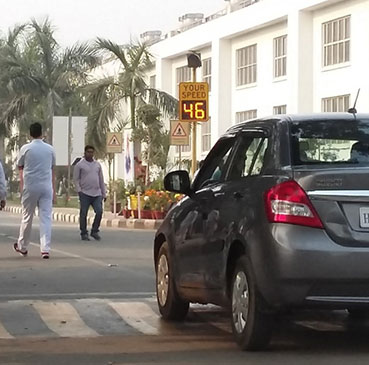Traffic Safety Solutions for Municipalities
Municipalities across the country have been working to add to the quality of life of its people. However, one of the biggest challenges which any municipality across India has been to ensure safer streets and calm traffic. The number of accidents across India over the last 3 years have always touched 1,50,000 mark. How do we ensure smooth roads, calm traffic and safer drive, how to aware drivers of what we need them to know. Are we really assuring the safety of our people.
Safer Cities
Traffic Logix offers ITS and traffic calming solutions to help cities create safer roads for all. With a complete line of radar speed signs and driver feedback signs we’re here to help cities prevent accidents before they happen. The powerful Logix Cloud helps capture data and generate reports so that cities can make informed decisions for safer streets.
Today’s Streets
With over 57 lac kilometres of roads, which is the second largest road network in the world, India makes the quantitative density of its road network higher than that of Japan (0.91) and the United States (0.98) to, and far higher than that of China (0.46), Brazil (0.18) or Russia (0.08). Reference . India, being the second most populous country in the world has approximately 4.7 km road over 1000 people. However, due to the increasing and traffic safety statistics of drivers and pedestrians on Indian roads have always been a topic of contemplation. Road accidental fatalities have increased for more than 9 times, from 14,500 in 1970 to 137,400 in 2013. This not just cost lives but also deteriorates the GDP by up to 3% annually.
Slower Cars Save Lives
Vehicle speed has been directly linked to crash likelihood as well as injuries and fatalities. On local roads, a few miles slower can make the difference between life and death. A car travelling at 80 kmph needs 25 metres to stop comfortably. At 50 kmph, the driver can stop in just 15 metres feet, making him much more likely to avoid hitting a pedestrian at all.
When accidents do happen, lower speeds save lives. A car travelling 65 kmph that hits a pedestrian, leaves her with just a 10% chance of survival. Slowed down to 30-35 kmph, the impact would be significantly reduced, and the pedestrian would have a 90% chance of survival.
Slower speeds prevent accidents from happening in the first place, and considerably reduce their impact when they do.






